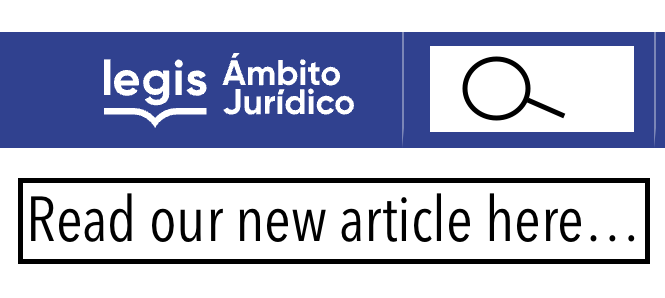Industrial Property in Legal English

Quick Guide
The Wright Brothers v Glenn Curtiss
U.S. Patent No. 821,393 entitled “Flying Machine” is upon us. Orville and Wilbur Wright, bicycle shop owners, solved the problem of lateral roll control on May 22, 1906.
- Mechanism for Flexing the Rudder of a Flying Machine or the Like: Orville and Wilbur Wright, Patent No. 908,929, granted January 5, 1909
- Flying Machine: Orville and Wilbur Wright, Patent No. 987,662, granted March 21, 1911
- Flying Machine: Orville and Wilbur Wright, Patent No. 1,075,533, granted October 14, 1913
- Flying Machine: Orville and Wilbur Wright, Patent No. 1,122,348, granted December 29, 1914
What is Industrial Property in Legal English?
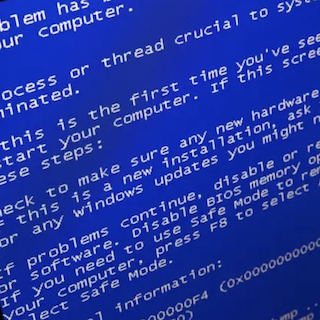
Industrial property refers to a specific category of intellectual property (IP) rights that protect inventions, innovations, and creations in the industrial and commercial sectors. It encompasses a wide range of intangible assets, including patents, trademarks, industrial designs, and trade secrets, which play a crucial role in fostering innovation, driving economic growth, and safeguarding the interests of businesses and inventors.
Patents: Patents are one of the most significant components of industrial property. They provide exclusive rights to inventors and innovators for a limited period, typically 20 years from the filing date, in exchange for disclosing their inventions to the public. Patents cover new and useful processes, machines, compositions of matter, and improvements thereof. They grant inventors a monopoly over their inventions, enabling them to prevent others from making, using, selling, or importing their patented inventions without permission.
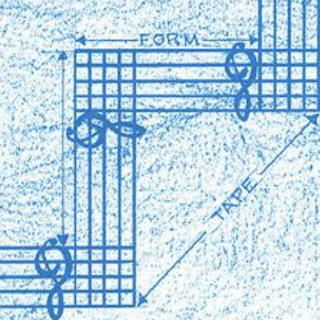
Industrial Designs: Industrial designs refer to the aesthetic or ornamental aspects of a product, such as its shape, configuration, pattern, or ornamentation. They protect the visual appearance of manufactured goods and prevent unauthorized copying or imitation. Industrial design protection grants exclusive rights to the creator for a limited period, usually ranging from 10 to 25 years, depending on the jurisdiction.

Geographical Indications (GIs): GIs protect products originating from specific regions and possess qualities or characteristics attributable to that geographical origin. They help consumers identify and associate certain products with their geographical source.

Trademarks: Trademarks protect distinctive signs, symbols, logos, names, or phrases that identify and distinguish goods or services from those of competitors. They serve as valuable business assets, representing the reputation, quality, and origin of products or services. Trademark registration provides exclusive rights to the owner, typically for a renewable period of 10 years, preventing others from using identical or confusingly similar marks in the same or related fields.

Trade Secrets: Trade secrets encompass confidential business information that provides a competitive advantage to its owner. They can include manufacturing processes, formulas, algorithms, customer lists, business strategies, and other non-public information that is kept secret. Unlike patents, trademarks, or industrial designs, trade secrets do not require registration. Instead, they rely on maintaining confidentiality through contractual agreements, access controls, and other measures to prevent unauthorized use or disclosure.
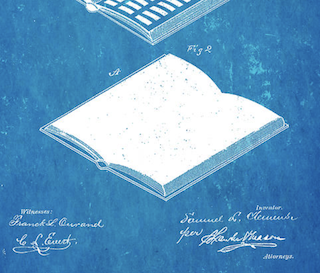
Important Terms
The first patent act in England was the Statute of Monopolies, enacted in 1623. This statute is often considered the earliest form of patent legislation in England. The first patent act was enacted in the United States on April 10, 1790. It was titled “An Act to promote the progress of useful Arts” and is commonly referred to as the Patent Act of 1790.

Patent: An exclusive right granted to an inventor for a new invention, providing the inventor with the ability to exclude others from making, using, or selling the invention for a limited period.
Trademark: A distinctive sign, such as a logo or word, used to identify and distinguish goods or services of one party from those of others.
Infringement: Unauthorized use, reproduction, or violation of another party’s intellectual property rights, such as patent, trademark, or copyright.
Trade Secret: Confidential business information that provides a competitive advantage, which is not generally known or readily ascertainable by others.
Industrial Design: The aesthetic or ornamental aspects of an article, protecting the visual appearance of a product or its features.
Utility Model: A type of patent-like protection that grants exclusive rights to a new and useful invention, often of lesser inventiveness compared to a standard patent.
Prior Art: Any publicly available information that existed before a certain date and can be used to determine the novelty and inventiveness of an invention.
Non-Disclosure Agreement (NDA): A legally binding contract that establishes a confidential relationship between parties involved, preventing the disclosure of proprietary or confidential information.
Licensing: Granting permission to another party to use or exploit intellectual property rights, such as patents, trademarks, or copyrights, in exchange for royalties or fees.
Novelty: The requirement for an invention to be new or not publicly disclosed before the filing date of a patent application.

Claim: The specific, detailed description of the subject matter for which an inventor is seeking patent protection.
Examiner: A professional responsible for assessing patent applications, examining prior art, and determining the patentability of inventions.
Priority Date: The date on which an application is filed, establishing the earliest possible filing date for the invention and determining its priority over later-filed applications.
Counterfeit: Unauthorized and illegal copies or imitations of genuine products, often infringing on trademark rights.
Assignment: The transfer of ownership or rights of intellectual property from one party to another, typically through a legal agreement.
Paris Convention: for the Protection of Industrial Property: An international treaty governing industrial property rights, including patents, trademarks, and industrial designs, providing for reciprocal treatment and priority rights.
Royalties: Payments made by a licensee to a licensor in exchange for the right to use or exploit intellectual property rights.
Freedom to Operate (FTO): The ability to use, manufacture, or commercialize a product or process without infringing on existing intellectual property rights held by others.
Intellectual Property Office (IPO): Government agencies responsible for the administration, examination, and granting of patents, trademarks, and other intellectual property rights.

Legal English Innovation

IRAC Case Study
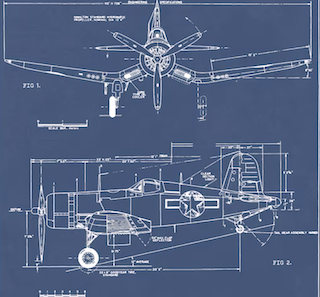
Issue:
The issue in this case is whether Glenn H. Curtiss infringed on the patents held by the Wright brothers related to their invention of the airplane.
Rule:
The rule in question is the validity and infringement of the Wright brothers’ patents. Patent law grants inventors exclusive rights to their inventions and the ability to prevent others from using, making, or selling their patented technology without permission.
Application:
The Wright brothers successfully flew the world’s first powered aircraft and obtained a patent in 1906, which covered key aspects of their design and control mechanism. Glenn H. Curtiss, an aviator and aircraft manufacturer, began producing airplanes that the Wright brothers claimed infringed on their patents. The Wright brothers filed a lawsuit against Curtiss’s company, alleging patent infringement based on the similarities in the aileron control systems and other fundamental elements of their invention.
The case, known as The Wright Company v. Herring-Curtiss Company, went to trial in 1913. The court examined the validity of the Wright brothers’ patents and assessed whether Curtiss’s airplanes indeed infringed on their patented technology. The court ruled in favor of the Wright brothers, affirming the validity of their patents and finding Curtiss guilty of infringement.
Glenn Curtiss continued to challenge the Wright brothers’ patents through subsequent lawsuits and appeals. The case eventually reached the United States Supreme Court in 1917, where the court upheld the validity of the Wright brothers’ patents and their exclusive rights to their invention.
Conclusion:
The Wright brothers successfully defended their patents against Glenn H. Curtiss, establishing their place in history as the inventors of the airplane. The court’s ruling affirmed the validity of their patents and recognized their exclusive rights to their invention, preventing unauthorized use and infringement.
The case set legal precedents in the field of aviation and patent law, highlighting the importance of patent protection in incentivizing innovation and protecting inventors’ rights. It emphasized the need for comprehensive patent strategies to safeguard groundbreaking inventions and ensure fair competition.
In conclusion, the Wright brothers’ patent battle against Glenn Curtiss showcases the challenges inventors face in protecting their intellectual property rights and the role of patents in driving technological advancements.


Writing Style Tips
How to write the legal issue in IRAC format?
Under the applicable law, did Curtiss infringe on the Wright Brother’s design when Curtiss Manufacturing Company, Inc. sold the “Golden Flyer” to the New York Aeronautic Society for $5,000 dollars.?
Quick View
- Review the relevant facts of the case.
- Determine the applicable area of law.
- Identify the specific conflict or problem at hand.
- Frame the legal issue as a clear and concise question.
- Revise and refine the legal issue statement for clarity and accuracy.
Review the relevant facts of the case:
Examine the factual details and circumstances surrounding the case. Identify the key events, actions, and parties involved. Understanding the facts is crucial in identifying the legal aspects that need to be addressed and determining how they relate to the applicable law.


Determine the applicable area of law:
Identify the specific area of law that governs the issue at hand. It could be contract law, criminal law, tort law, intellectual property law, or any other relevant legal domain. This step is essential as different areas of law have distinct principles, rules, and precedents that will guide the analysis and resolution of the legal issue.
Identify the specific conflict or problem at hand:
Pinpoint the central conflict, controversy, or problem that requires legal analysis. This involves understanding the opposing positions or arguments presented in the case. It could involve questions of liability, breach of contract, negligence, constitutional rights, or any other legal matter that requires resolution.


Frame the legal issue as a clear and concise question:
Formulate the legal issue as a question that captures the essence of the dispute or problem. The question should be precise, focused, and directly related to the applicable law. It serves as a guide for analyzing the case and helps in finding a resolution. A well-constructed legal issue question sets the foundation for the subsequent legal analysis.
Revise and refine the legal issue statement for clarity and accuracy:
Review the drafted legal issue statement and refine it to ensure clarity, accuracy, and completeness. Consider whether the language used is clear and understandable. Make sure the statement accurately reflects the core legal problem or question. Seek feedback from colleagues, legal experts, or mentors to refine the wording and structure of the legal issue statement.


How to start:
Usually, you start with the phrase “Under the relevant law…”
Under the relevant law,
Step 2: The Question
There are many phrases that you can use in order to establish the question.
…did Curtiss infringe on the Wright Brother’s patent…
…was Curtiss infringing on the Wright Brother’s patent…
…can one infringe on another’s patent…
Step 3: The Time
Use the word “when” in order to establish the setting and time.
…when…
Step 4: The Problem
Be clear in your point, and elaborate only the necessary details.
Curtiss Manufacturing Company, Inc. sold the “Golden Flyer” to the New York Aeronautic Society for $5,000 dollars.


Legal English Innovation

Rights Granted by Industrial Property
Patents
-
- Exclusive Rights: Patent holders have the exclusive right to prevent others from making, using, selling, or importing their patented invention without their permission.
- Monopoly: Patents grant a temporary monopoly, usually for 20 years from the filing date, during which the patent holder has the sole right to exploit their invention commercially.
- Licensing and Transfer: Patent holders can license their invention to others, allowing them to use the patented technology in exchange for royalties or other forms of compensation. They can also sell or transfer their patent rights to another party.
Trademarks
-
- Exclusive Use: Trademark owners have the exclusive right to use their registered trademark in connection with the goods or services they provide. They can prevent others from using a similar or identical mark that may cause confusion among consumers.
- Brand Protection: Trademarks help build brand recognition and reputation, protecting the distinctive identity of a company, product, or service in the marketplace.
- Licensing and Franchising: Trademark owners can license their trademark to others, granting them the right to use the mark in specific circumstances. Franchising arrangements also rely on trademark licensing.
Industrial Designs
-
- Exclusive Rights: Owners of registered industrial designs have the exclusive right to use their design for the designated period. They can prevent others from manufacturing, selling, or using products that embody their protected design without authorization.
- Aesthetic Protection: Industrial designs protect the visual appearance of a product, including its shape, configuration, pattern, or ornamentation. They safeguard the unique and appealing features that make a product visually distinctive.
Trade Secrets
-
- Confidentiality: Trade secrets provide protection for valuable confidential business information that is not generally known or easily accessible. Owners of trade secrets have the right to keep their information confidential and prevent others from misappropriating or disclosing it without authorization.
- Competitive Advantage: Trade secrets offer a competitive advantage by allowing businesses to maintain secrecy over proprietary information that gives them a commercial edge, such as formulas, processes, customer lists, or marketing strategies.


Legal English Innovation

The Patent Cooperation Treaty (PCT)
Here are five key takeaways about the PCT:
The Patent Cooperation Treaty (PCT): is an international treaty that provides a unified and streamlined process for filing patent applications in multiple countries. Here are five key takeaways about the PCT:
And five initials to learn:
International Searching Authority (ISA)
International Search Report (ISR)
International Preliminary Examination (IPE)
International Preliminary Examining Authority (IPEA)
World Intellectual Property Organization (WIPO)
International Filing: The PCT allows inventors and applicants to file a single international patent application, known as a PCT application, rather than filing separate applications in each desired country. This simplifies the process and reduces costs for applicants.
Priority Date: By filing a PCT application, applicants can establish an early priority date for their invention. This priority date is crucial for determining the novelty of the invention and provides a grace period during which subsequent applications can be filed in other countries.
International Search Report (ISR): Upon filing a PCT application, an ISR is prepared by a designated International Searching Authority (ISA). The ISR identifies prior art relevant to the invention and helps applicants assess the patentability and potential challenges of their invention.
International Preliminary Examination (IPE): In addition to the ISR, applicants have the option to request an IPE. This examination provides a detailed analysis of the invention’s patentability and helps applicants make informed decisions about pursuing patents in specific countries.
National Phase: After the PCT application is filed, applicants enter the national phase, during which they have the opportunity to pursue patent protection in individual countries of interest. The PCT application serves as a basis for filing national or regional patent applications and provides additional time (usually 30 months from the priority date) to make decisions and incur costs associated with individual country filings.


Legal English Innovation

Prior Art
Definition:
Prior art refers to any existing knowledge, evidence, or information that predates a particular invention or innovation. It includes publicly available documents, patents, publications, scientific articles, technical papers, trade journals, public demonstrations, and any other sources of information that disclose or make known the subject matter of the invention.
Relevancy:
Prior art is relevant in the field of intellectual property, particularly during the examination of patent applications, to assess the novelty and non-obviousness of an invention. It helps determine if an invention is truly new and inventive by comparing it to what has been previously disclosed or known in the public domain.


Legal English Innovation

Novelty
Do not talk to anyone!!
Novelty, in the context of intellectual property (IP), refers to the requirement that an invention or creation must be new and not publicly disclosed before the relevant filing or priority date. It is a fundamental criterion for obtaining protection in areas such as patents, trademarks, and industrial designs.
In the IP context, novelty ensures that an invention or creation is genuinely innovative and deserving of legal protection. It aims to prevent individuals from claiming exclusive rights over something that has already been disclosed or made available to the public, as it would not contribute to the progress of science, technology, or arts.
Patent Example:
Let’s say an inventor has created a new type of new office chair to help posture. In order to seek patent protection for this invention, the inventor must ensure that the chair design has not been publicly disclosed before the filing date of the patent application. If the inventor had presented the design at a public conference or published it in a legal or design journal prior to filing the patent application, the novelty of the invention may be compromised, and it may not meet the requirements for patentability.


Legal English Innovation

™ vs ®
TM Symbol (™): The “TM” symbol stands for “trademark” and is used to indicate that a word, phrase, logo, or design is being used as a trademark or a source identifier for goods or services. It is commonly used before a trademark is officially registered with the appropriate trademark office. The “TM” symbol is used to put the public on notice that the owner claims rights to the mark, even if it is not yet registered.
It does not necessarily indicate that the mark is legally protected or has been granted exclusive rights.
R Symbol (®): The “R” symbol, which stands for “registered,” is used to indicate that a trademark has been officially registered and granted legal protection by the relevant trademark office. It signifies that the trademark has undergone a formal registration process and has met the requirements for registration, including distinctiveness, non-generic nature, and not causing confusion with existing marks.
The “R” symbol can only be used for trademarks that are registered in the specific jurisdictions where the symbol is recognized.


Legal English Innovation
About the Author
Eric Froiland
Eric is a legal English teacher from the United States and has been based out of Bogota, Colombia for the last 10 years. He is the owner and founder of Legal English Innovation SAS, which is recognized as the top legal English academy in Colombia and is an official Test of Legal English Skills (TOLES) examination center.

